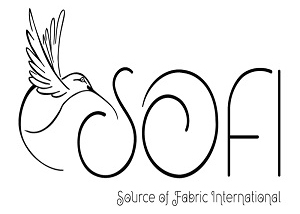Hemp fabric textiles are making waves in the sustainable fashion scene, and it’s easy to see why. As a versatile and eco-friendly material, hemp offers a perfect blend of durability and comfort, making it an ideal choice for everything from clothing to home decor. With growing concerns about environmental impact, more people are turning to hemp as a responsible alternative to conventional fabrics.
Imagine wearing clothes that not only look good but also contribute to a healthier planet. Hemp grows quickly and requires minimal resources, making it a champion of sustainability. Plus, its natural properties mean it’s naturally resistant to mold and UV light, ensuring your garments last longer. Dive into the world of hemp textiles and discover how this ancient material is redefining modern fashion while promoting eco-conscious living.
Understanding Hemp Fabric Textiles
Understanding hemp fabric textiles begins with recognizing their natural properties. Hemp fibers originate from the stalk of the hemp plant, which is one of the most sustainable crops. They grow quickly, require little water, and do not deplete soil nutrients, making them an eco-friendly option.
Consider the benefits of hemp fabrics. Hemp offers durability, as it withstands wear and tear better than many other materials. Hemp possesses breathability, contributing to comfort in clothing. Hemp resists mold and UV rays, protecting textiles from degradation caused by environmental factors.
Explore the manufacturing process of hemp fabric. Harvesting involves cutting the stalks and separating the fibers. Processing requires retting, which breaks down the pectin that binds fibers to each other. This method retains the fibers’ strength while preparing them for spinning into yarn.
Analyze the various types of hemp textiles available. Hemp canvas is popular for bags and home decor. Hemp jersey offers softness and flexibility, making it suitable for clothing. Hemp blends, combining hemp with cotton or linen, enhance texture and performance for diverse applications.
Evaluate the environmental impact of choosing hemp fabric. Hemp cultivation uses less water compared to cotton, reducing agricultural stress on water supplies. Hemp farming does not require synthetic pesticides or fertilizers, promoting healthier ecosystems and soil.
Incorporate hemp textiles into your life. Choose sustainable fashion brands that prioritize hemp in their collections. Opt for home goods like towels and bed linens made of hemp for eco-friendly living. Participate in the growing acceptance of hemp fabrics, contributing to a positive shift in the industry.
Understanding hemp fabric textiles involves recognizing their benefits, manufacturing process, and environmental advantages. By choosing these products, you support sustainability while enjoying high-quality materials.
Benefits of Using Hemp Fabric Textiles
Hemp fabric textiles offer various benefits, making them a preferred choice in sustainable fashion. These advantages include eco-friendly properties, durability, comfort, and versatility.
Eco-Friendly Properties
Hemp fabric textiles showcase eco-friendly properties. Hemp cultivation uses significantly less water compared to cotton, requiring up to 50% less water for growth. This reduced water usage contributes to healthier ecosystems. Hemp plants thrive in poor soil conditions and grow quickly, allowing for multiple harvests each year. The absence of synthetic pesticides and fertilizers promotes chemical-free farming practices, leading to a lower environmental impact. Furthermore, hemp absorbs more carbon dioxide during its growth cycle than many other crops, reducing greenhouse gas levels. By using hemp textiles, you support sustainable agriculture and contribute to environmental preservation.
Durability and Strength
Hemp fabric textiles exhibit durability and strength. Hemp fibers are three times stronger than cotton and possess a high tensile strength that enhances the longevity of products. This strength results in fabrics that resist wear and tear, making them suitable for everyday use. Hemp textiles maintain their integrity even after multiple washes, ensuring items remain in good condition for longer periods. Additionally, the inherent resistance to mold and mildew makes hemp ideal for various applications, such as outdoor gear and home textiles. By choosing hemp, you invest in long-lasting products that save you money over time.
Comfort and Breathability
Hemp fabric textiles provide comfort and breathability. The natural fibers allow for excellent moisture-wicking capabilities, keeping you dry and comfortable in various weather conditions. Hemp fabrics also have breathability properties that help regulate body temperature, making them suitable for summer and winter wear. Skin sensitivity remains minimal due to hemp’s hypoallergenic nature, reducing the risk of irritation. The softness of processed hemp textiles increases with washing, enhancing overall comfort. Choosing hemp means opting for fabrics that feel good against the skin while providing functional benefits.
Versatility in Applications
Hemp fabric textiles offer versatility in applications. Available in various forms such as canvas, jersey, and blends, they cater to diverse needs. Hemp canvas suits bags and home decor due to its durability, while hemp jersey provides comfort for everyday clothing. Blended fabrics enhance texture and performance, combining the strengths of hemp with other materials like cotton or polyester. As a result, hemp textiles can be used in fashion, upholstery, accessories, and more, making them adaptable for various lifestyles. Incorporating hemp into your wardrobe and home supports sustainability without sacrificing style.
Types of Hemp Fabric Textiles
Hemp fabric textiles come in various forms, each serving different purposes and catering to diverse preferences. Here, you will explore the main types of hemp textiles available in the market.
Woven Hemp Fabrics
Woven hemp fabrics consist of threads interlaced together to form a strong and durable textile. Common examples include hemp canvas and hemp twill. Hemp canvas is often used in bags, tents, and upholstery due to its robust nature. Hemp twill offers a diagonal weave pattern, enhancing both strength and aesthetics, making it suitable for jackets and durable clothing.
These woven fabrics excel in breathability and moisture-wicking. Natural fibers allow air circulation, making them comfortable in various climates. Additionally, their resistance to mold and UV light adds to their longevity. Woven hemp textiles appeal to consumers seeking eco-friendly alternatives without compromising on quality or durability.
Knitted Hemp Fabrics
Knitted hemp fabrics differ from woven types as they consist of interlocking loops, providing stretch and flexibility. Hemp jersey is a popular example of knitted hemp fabric, often used in t-shirts, dresses, and activewear. The stretchy nature of jersey makes it comfortable for everyday wear, adapting easily to movements.
Knitted hemp fabrics retain breathability while providing a soft, tactile experience. These textiles also benefit from hemp’s natural properties, including hypoallergenic qualities, which make them suitable for individuals with sensitive skin. By choosing knitted hemp fabrics, you support sustainable fashion while enjoying comfort and versatility in your wardrobe.
Blended Hemp Fabrics
Blended hemp fabrics combine hemp fibers with other materials to enhance functionality and feel. Common blends include hemp-cotton and hemp-silk. Hemp-cotton blends offer the softness of cotton while maintaining the durability of hemp, making them ideal for casual wear and everyday items like shirts and sheets. Hemp-silk blends provide a luxurious touch, perfect for high-end fashion and accessories.
Blended fabrics allow for various textures and finishes, appealing to a wider audience. These textiles offer improved drape and feel while taking advantage of hemp’s eco-friendly properties. By incorporating blended hemp fabrics into your lifestyle, you access the benefits of both hemp and the accompanying fiber, resulting in high-quality, sustainable products.
How to Care for Hemp Fabric Textiles
Caring for hemp fabric textiles maintains their quality and extends their lifespan. Follow these guidelines for proper washing, drying, and ironing.
Washing Instructions
Hemp fabrics require gentle washing to preserve their fibers and colors.
- Use Cold Water: Always wash hemp textiles in cold water to prevent shrinking and fading.
- Opt for Mild Detergent: Select a mild detergent that lacks harsh chemicals. Avoid bleach, which can damage the fibers.
- Choose a Gentle Cycle: Set your washing machine to a gentle cycle. This reduces agitation, helping to maintain the fabric’s integrity.
- Do Not Overload: Wash hemp items with similar colors to prevent dye transfer. Do not overload the washing machine, which can lead to abrasion.
If stains occur, treat them promptly. Use a mixture of water and mild soap on the stain before washing. For stubborn stains, consider pre-soaking the fabric in cold water with a small amount of detergent.
Drying and Ironing Tips
Drying and ironing hemp fabric require specific methods for optimal care.
- Air Drying: Hang hemp textiles to air dry whenever possible. This method maintains the fabric’s shape and prevents shrinking.
- Avoid Direct Sunlight: Sun exposure can fade colors. Dry in a shaded area to protect the fibers.
- Use Low Heat if Machine Drying: For machine drying, opt for a low heat setting. Remove the fabric while slightly damp to avoid wrinkles.
- Iron While Damp: Iron hemp while still damp for easier wrinkle removal. Set the iron on a medium heat setting. Using a pressing cloth can also protect the fabric.
By following these care instructions, you ensure your hemp fabric textiles remain comfortable and durable for years.
DIY Projects with Hemp Fabric Textiles
Hemp fabric textiles offer a sustainable option for various DIY projects. This section covers easy sewing projects, home decor ideas, and stylish accessories.
Sewing Basic Items
Sewing with hemp fabric textiles creates durable and functional items. Start by selecting woven hemp fabric like hemp canvas or hemp twill for strength. Basic projects include tote bags, aprons, and table runners.
- Tote bags: Cut two rectangles of equal size for the bag body. Use strong thread for seams. Add handles made of hemp webbing for extra strength.
- Aprons: Cut one large piece for the apron body and two smaller pieces for straps. Secure with straight or zigzag stitches to ensure durability.
- Table runners: Cut a long rectangle to fit your table’s dimensions. Hem the edges to prevent fraying. Adding a printed design makes it unique.
Sewing these basic items allows you to enjoy the benefits of hemp fabric, including its eco-friendliness and durability. Each project serves as a functional addition to your home or daily routine, showcasing your commitment to sustainable choices.
Crafting Home Decor
Crafting home decor projects with hemp fabric textiles enhances your living space sustainably. Many hemp textiles suit different decor styles, making your projects both attractive and functional.
- Cushions: Cut fabric into squares or rectangles based on your desired size. Fill with eco-friendly stuffing for comfort. Sew the edges securely for a long-lasting finish.
- Wall hangings: Use a wooden dowel and cut strips of hemp fabric. Tie the strips to create a visually appealing design. Hang it in any room for a touch of natural texture.
- Tablecloths: Measure your table and cut the hemp fabric to size. Hem the edges to prevent fraying. A hemp tablecloth adds warmth and style to meal settings.
Using hemp fabric for home decor not only improves aesthetics but also aligns with eco-friendly practices. These projects highlight the versatility of hemp textiles, allowing you to enjoy both beauty and sustainability in your environment.
Making Accessories
Making accessories with hemp fabric textiles helps you express your style while supporting sustainability. Accessories made from hemp can be both practical and trendy.
- Headbands: Cut strips of fabric that fit comfortably around your head. Sew the ends together or use a knot for an adjustable fit. Choose vibrant prints for a fun look.
- Wallets: Use hemp canvas to create sturdy wallets. Cut rectangles and sew them to form pockets. Secure closures with snaps or Velcro for convenience.
- Belts: Cut a long strip of fabric to your desired length. Sew a buckle at one end for closure. This durable belt adds a stylish touch to any outfit.
These accessory projects emphasize fashion without compromising the environment. Using hemp fabric textiles for your accessories allows you to be fashionable while conscious of your impact on the planet.
Where to Buy Hemp Fabric Textiles

Purchasing hemp fabric textiles can be straightforward and convenient. You have several options, including online retailers and local fabric stores, to explore various products.
Online Retailers
Online Retailers provide a vast array of hemp fabric textiles, making it easy to browse different types and styles from the comfort of your home. Websites such as Etsy, Amazon, and Fabric.com offer various selections of hemp textiles.
- Etsy hosts numerous small businesses selling handcrafted hemp fabrics in various weaves and designs. You can find unique patterns and colors, perfect for DIY projects.
- Amazon lists hemp fabric options from multiple manufacturers, providing customer reviews to help you make informed choices. Many sellers offer hemp blends for various applications.
- Fabric.com specializes in a wide range of fabrics, including hemp. Their selection includes woven and knitted fabrics for clothing and home decor needs.
Online shopping for hemp fabrics often includes detailed product descriptions and photos. You can filter by price, style, and material to find the perfect textile that suits your project requirements.
Local Fabric Stores
Local Fabric Stores offer the advantage of viewing hemp textiles in person. Visiting these stores lets you touch and feel the fabric, assessing the quality and texture before making a purchase.
- Independent fabric shops may carry hemp-based textiles sourced from ethical suppliers. These stores often focus on sustainable products, and the staff can provide personalized recommendations.
- Chain fabric stores like Joann Fabrics may carry hemp options. While the selection can be limited, you may find blended fabrics that combine hemp with other materials for improved functionality.
- Specialty stores dedicated to eco-friendly fabrics often stock a variety of hemp textiles. These stores cater to consumers interested in sustainable choices in fashion and home decor.
When visiting local stores, remember to ask staff about their hemp textile selection. They can guide you to the products that meet your needs and provide information on care and use.
Common Issues with Hemp Fabric Textiles
Hemp fabric textiles, while sustainable and durable, can present specific challenges that users may encounter during use and care.
Shrinkage Concerns
Shrinkage often occurs when washing hemp fabric textiles. Hemp fibers can absorb moisture, leading to changes in size if not properly cared for. You create a strategy to minimize shrinkage by washing in cold water. You should wash hemp fabrics gently and use a mild detergent. Avoiding high temperatures during washing and drying also helps maintain the fabric’s integrity. Air drying or using a low heat setting in the dryer preserves sizing accuracy. Note that pre-washed hemp fabrics show less tendency to shrink, providing reassurance.
Color Fading
Color fading in hemp textiles can happen with prolonged exposure to sunlight or frequent washing. Natural dyes, while eco-friendly, may not be as colorfast as synthetic options. You can combat fading by avoiding direct sunlight when storing your hemp items. Washing with cold water and avoiding harsh detergents preserves color vibrancy. White vinegar added during washing can help set the color. Always check care labels for specific guidelines tailored to your fabric. Choosing darker shades can minimize the visibility of fading over time.
Texture Changes
Hemp fabric can experience texture changes through use and washing. Over time, fabric structure may soften, leading to a different feel. You can maintain the texture by following recommended care processes. Washing hemp on a gentle cycle assists in keeping the fabric intact. Air drying prevents stiffening that might occur from machine drying. If softness is desired, opt for blended fabrics that combine hemp with materials like cotton. These blends can enhance comfort while retaining hemp’s beneficial properties. Regular maintenance and following care guidelines contribute to prolonged fabric life and easy wear.
Troubleshooting Hemp Fabric Textiles
Address common issues with hemp fabric textiles easily by following effective solutions for shrinkage, color vibrancy, and softness.
Fixing Shrinkage Problems
Shrinkage occurs with hemp fabric after washing. To prevent shrinkage, wash hemp textiles in cold water. Use a gentle cycle to minimize agitation. Avoid overloading the washing machine; this helps fabrics move freely and maintain their shape. Air drying works best for hemp fabrics. If using a dryer, set it to low heat. Remove the fabric while still slightly damp to prevent excessive shrinking.
If shrinkage occurs, lightly stretch the fabric while it is damp. This helps restore some of its original size. Consider pre-washing hemp textiles before sewing projects. This procedure allows you to account for any potential shrinkage. Third-party pre-washing can enhance durability while conserving fabric quality.
Restoring Color Vibrancy
Color fading may happen with hemp textiles over time. To maintain vibrant colors, wash with cold water using a mild detergent. Add white vinegar to the rinse cycle; this helps set colors and prevents fading. Additionally, avoid exposing hemp fabrics to direct sunlight for prolonged periods. Sunlight can cause colors to fade more rapidly.
If colors have already faded, consider re-dyeing the fabric using natural or fabric dyes. Test a small patch first to ensure desired results. This method enhances the fabric’s appearance without compromising its structure. Keep your hemp items away from harsh chemicals that can strip the color. Regularly following these practices keeps your hemp textiles looking fresh and vibrant.
Maintaining Softness
Some hemp fabrics can feel stiff after initial use. To enhance softness, wash the fabric with a gentle detergent. Adding fabric softener during the rinse cycle also helps. Optionally, tumble dry the fabric on a low heat setting for a short time to soften the fibers further.
For added softness, consider blending hemp with other fabrics like cotton or linen. This increases the softness while retaining benefits of hemp. If a softer feel is essential, opt for multi-fabric blends when purchasing. Regular care and gentle handling also contribute to maintaining the comfort of your hemp textiles. Adhering to these practices allows you to enjoy the durability of hemp without sacrificing comfort.
Conclusion
Hemp fabric textiles are more than just a trend; they’re a step towards a sustainable future. By choosing hemp, you’re not only embracing eco-friendly materials but also enjoying the benefits of durability and comfort.
As you explore the wide range of applications for hemp textiles in your wardrobe and home, consider the positive impact your choices can make. Whether you’re sewing your own creations or purchasing from sustainable brands, you’re supporting a movement that values both style and environmental responsibility.
Incorporating hemp into your lifestyle is a simple yet powerful way to contribute to a healthier planet while enjoying high-quality textiles.
Frequently Asked Questions
What are hemp fabric textiles?
Hemp fabric textiles are materials made from the fibers of the hemp plant. These textiles are known for their eco-friendliness, durability, and versatility, making them popular in sustainable fashion and home decor. With increasing concerns about environmental impact, hemp offers a natural alternative to traditional fabrics.
Why is hemp considered eco-friendly?
Hemp is considered eco-friendly due to its rapid growth, low resource requirements, and ability to grow without synthetic pesticides. It requires significantly less water compared to cotton and promotes healthier ecosystems, making it a sustainable choice in the fashion industry.
What types of hemp textiles are available?
Hemp textiles come in three main types: woven (like hemp canvas), knitted (such as hemp jersey), and blended fabrics. Each type serves different purposes, from durable bags and clothing to comfortable everyday wear and enhanced textures.
How should I care for hemp fabric textiles?
To care for hemp textiles, wash in cold water with mild detergent on a gentle cycle. Avoid overloading the washing machine and air dry in a shaded area. If machine drying, use low heat, and iron while damp to minimize wrinkles.
Can I use hemp fabric for DIY projects?
Yes! Hemp fabric is great for DIY projects. You can make various items like durable tote bags, aprons, home decor (cushions, wall hangings), and stylish accessories (headbands, wallets). These projects allow for creative expression while supporting sustainable practices.
Where can I buy hemp fabric textiles?
You can buy hemp fabrics online from retailers like Etsy, Amazon, and Fabric.com. Local fabric stores may offer the advantage of assessing quality in person. Specialty eco-friendly shops often carry ethically sourced hemp textiles for sustainable choices.
What issues can arise with hemp fabric textiles?
Common issues with hemp textiles include shrinkage, color fading, and texture changes. However, these issues can often be minimized by following proper care guidelines, such as washing in cold water, air drying, and avoiding direct sunlight.
How can I address shrinkage in hemp fabric?
To minimize shrinkage in hemp fabric, wash it in cold water and air dry whenever possible. If you must use a dryer, select low heat settings to help preserve the fabric’s shape and prevent excessive shrinking over time.


